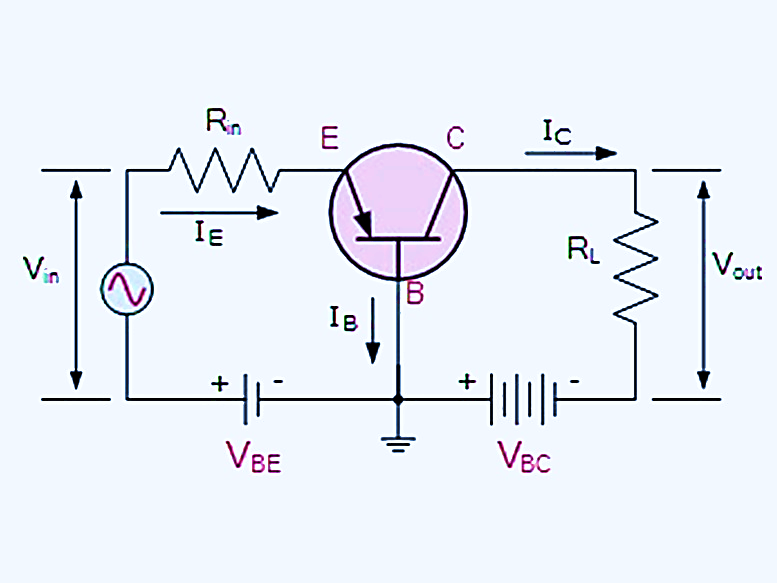Question
Question: The collector current in a transistor circuit is \( 2.9mA \). If the base current is \( 100\mu A \)....
The collector current in a transistor circuit is 2.9mA. If the base current is 100μA. α of the transistor is:
(A) 0.066
(B) 0.77
(C) 0.97
(D) 0.87
Solution
Hint
In a bipolar transistor, being operated in any of the three configurations.
It is always valid that:
Emitter current = Base current + collector current
⇒IE=IB+IC
Value of collector current and base current is given, find the value of emitter current from above.
Now, α(current gain)=IEIC
Put the values of IC and IE and get the value of α.
Complete step by step answer
When we join two PN junction diodes, back to back (p-p or n-n sides are joined) it forms a bipolar junction transistor.
Two types of bipolar transistor can be formed depending upon the sides joined.
PNP or NPN.
A transistor is a three-terminal device, and the three terminals are named Emitter(E), Collector(C) and Base(B).
Three configurations can be obtained by making any of the three terminals common.
The figure given below shows a PNP transistor circuit in Common base configuration.

As we can see in the figure, above that at junction B the emitter current is being divided into Base current and collector current.
Hence, we can say that:
Emitter current = Base current + collector current (it is valid for any of the configuration)
⇒IE=IB+IC
In the question it is given that,
IC=2.9mA
And IB=100μA=100×10−6A=0.1×10−3A=0.1mA
∴IE=2.9+0.1=3mA
Now, αis the current gain, which is given by:
current gain=α=IEIC
So, here αwill come out to be:
α=32.9=0.9666≈0.97
Hence, (C) is the correct option.
Note
Whenever a unitless quantity (like α ) is given by the ratio of the two similar quantities (like current in above question), always first make the two similar quantities of the same units (like above both the currents was converted to mA) otherwise their will be an error in the answer.
